The Electro Harmonix Soul Food is one of my favourites; it’s got a rich, transparent, dynamic tone with a nice rumble. It’s a versatile weapon. Here’s a quick guide to get you started:
Power the EHX Soul Food with a 9V DC power supply (22 mA) or a 9V battery. Place the pedal near the start of your signal chain, after compression but before modulation or time-based FX. Start with the Drive knob at zero and Vol and Treble at 12 o’clock, then adjust them one by one while playing.
Everything The Electro-Harmonix Soul Food Can Do & How to Use It
1) The Main Controls of the Electro-Harmonix Soulfood
A) Drive
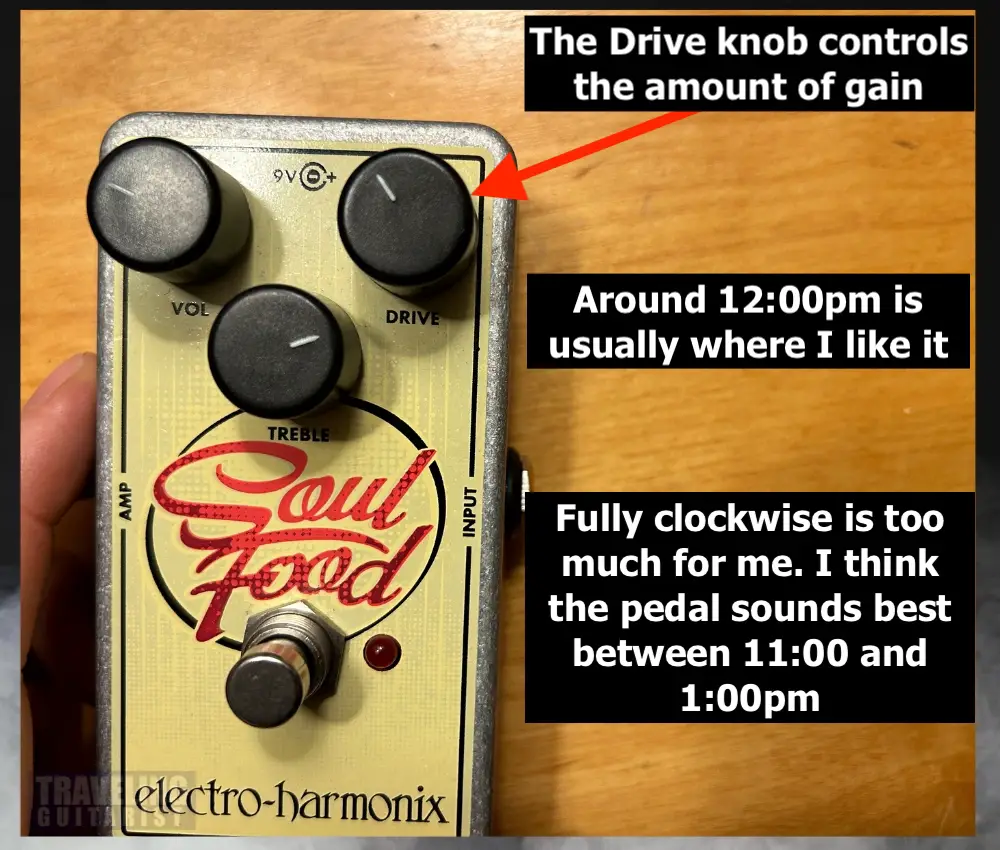
The DRIVE knob controls the amount of gain you get. It’s your gateway to a range of sounds, from a clean boost, a touch of dirt, or full-on distortion.
To use it as a clean boost, turn the Drive knob down all the way and adjust the Vol knob to your preferred level. This setting allows you to boost the signal without adding distortion. Perfect for adding presence to a solo.
As you gradually increase it, the overdrive becomes thicker, and the mids become more prominent too. So this knob adds both gain and mids.
At about 12 o’clock (the midpoint), it’ll be a crunchy overdrive that’s good for rock rhythms.
At fully clockwise, the pedal sounds like a thick, fat distortion with a lot of sustain; kind of like a vintage ‘60s tube amp.
But what I really love about this pedal is how it shapes the tone as you adjust the Drive knob. There are a lot of positions across the full circle that sound incredible.
So I recommend trying it out in small steps and listening to the changes. You can find a sweet spot pretty quickly.
B) Treble
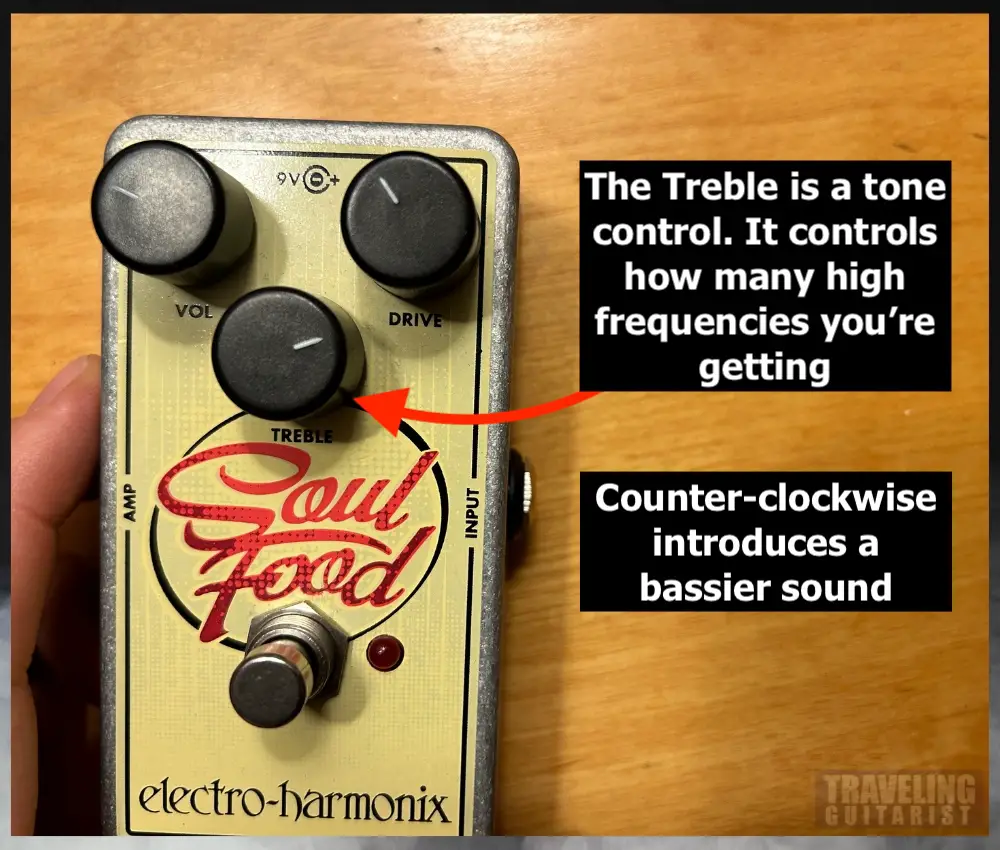
The Treble knob is a tone control. At 12 o’clock, it’s a balanced sound with a neutral tone. So I recommend starting here.
As you turn it clockwise, it increases the amount of treble, so you get a brighter sound with more presence. This helps cut through the mix in a band setting, and is especially useful for country or even metal tones.
Turn it counterclockwise, and you’ll get a warmer, bassy sound. Turning it left all the way makes it sound very dark. I prefer this for when I’m playing blues or jazz.
But the important thing is that this knob is really sensitive; just small adjustments can bring out a lot. So don’t just push it fully right or left, work your way in small steps and check how it sounds.
Also, I find that by increasing the Treble, sometimes my guitar tone sounds harsh on its own, but it actually works well once you play along with bass and drums.
C) Volume
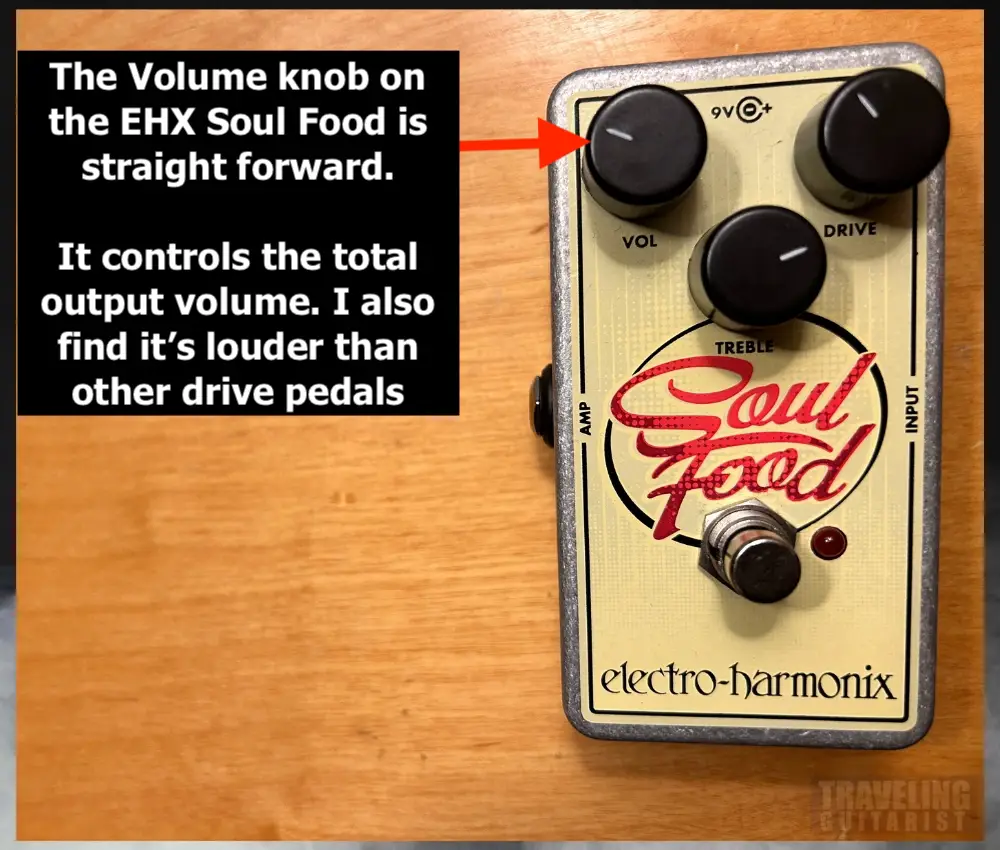
The VOL knob is pretty straightforward as it controls the overall output level of the Soul Food, but it’s the key to getting a good balance between the pedal when it’s on and off.
The point where your guitar volume sounds the same whether the pedal is on or off is called Unity Gain.
To achieve Unity Gain, adjust the volume knob in small steps and check the volume by bypassing it and engaging it again.
When using the Drive as a clean boost, you can raise the volume levels to get more presence in the mix; which, again, is great for a solo or a catchy lick.
If you’ve turned up the Drive, that’ll add gain and volume too, so you can lower this Volume knob to balance out your levels and aim for a consistent sound.
2) How to Switch Between Buffered and True Bypass
A) Unplug the Pedal
Disconnect the pedal from your signal chain and remove the power supply.
Make sure you’re not connected to a live signal in a sensitive environment first.
B) Open the Pedal
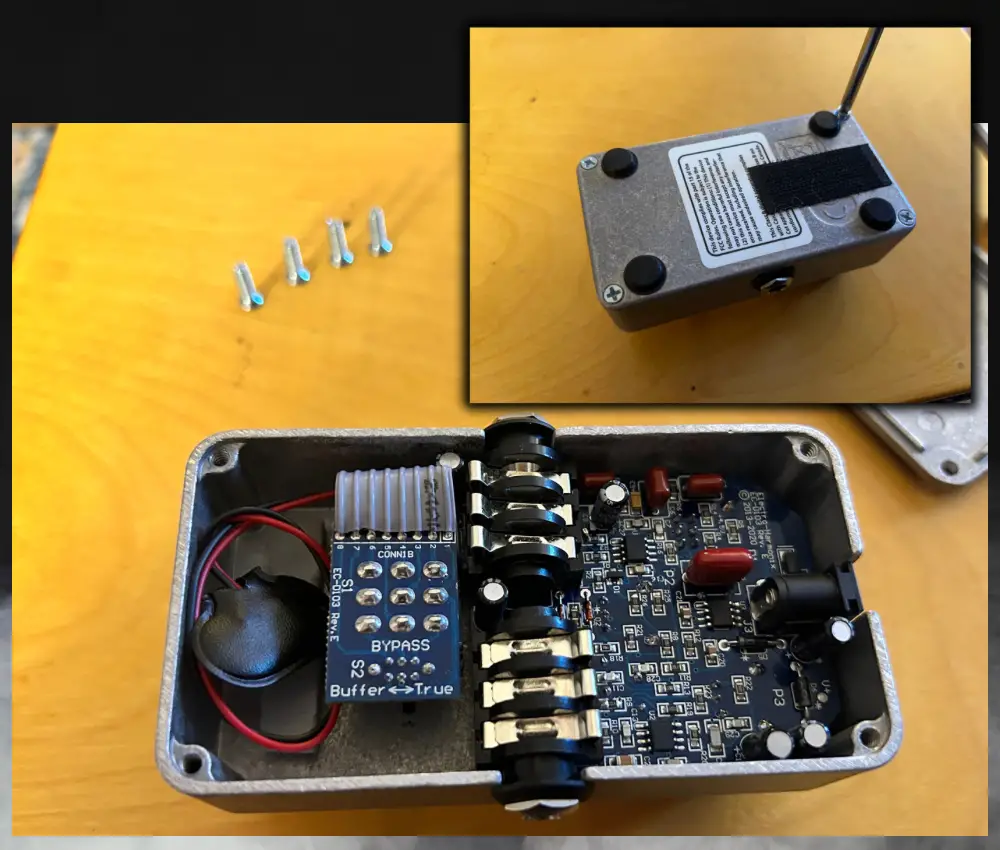
Carefully open the pedal’s back cover using a Philips screwdriver.
C) Locate the Switch
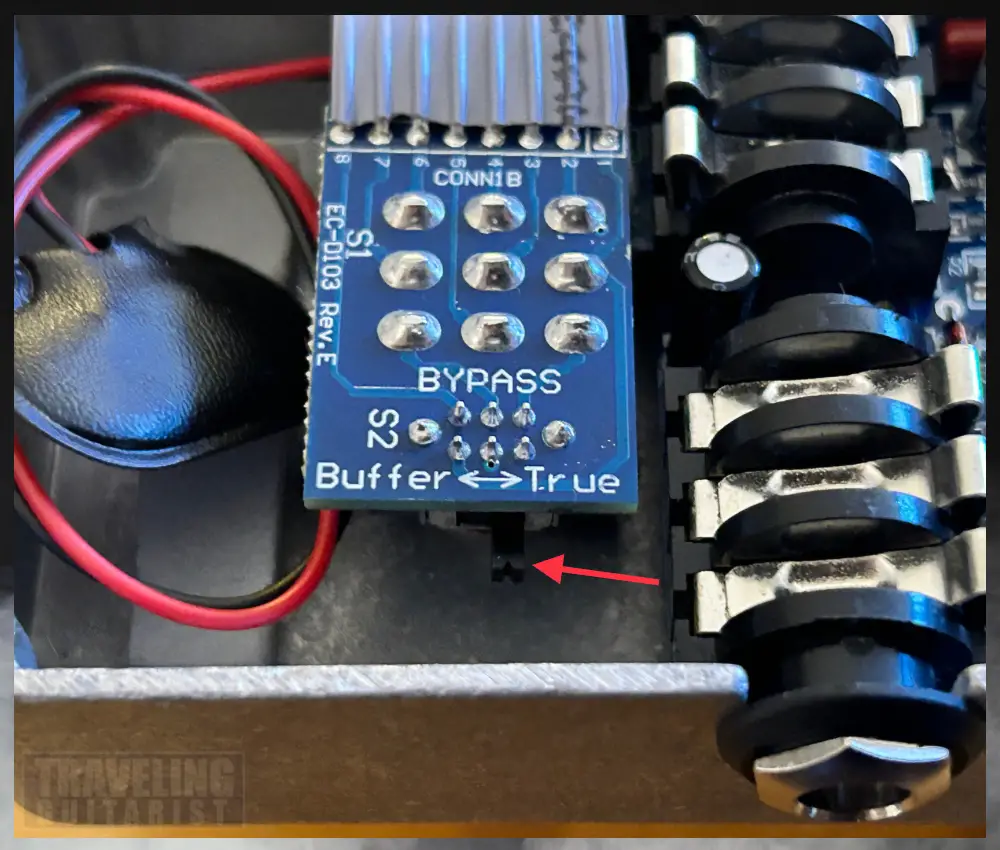
Find the internal switch at the bottom right inside the pedal, below the Amp jack.
D) Switch Modes
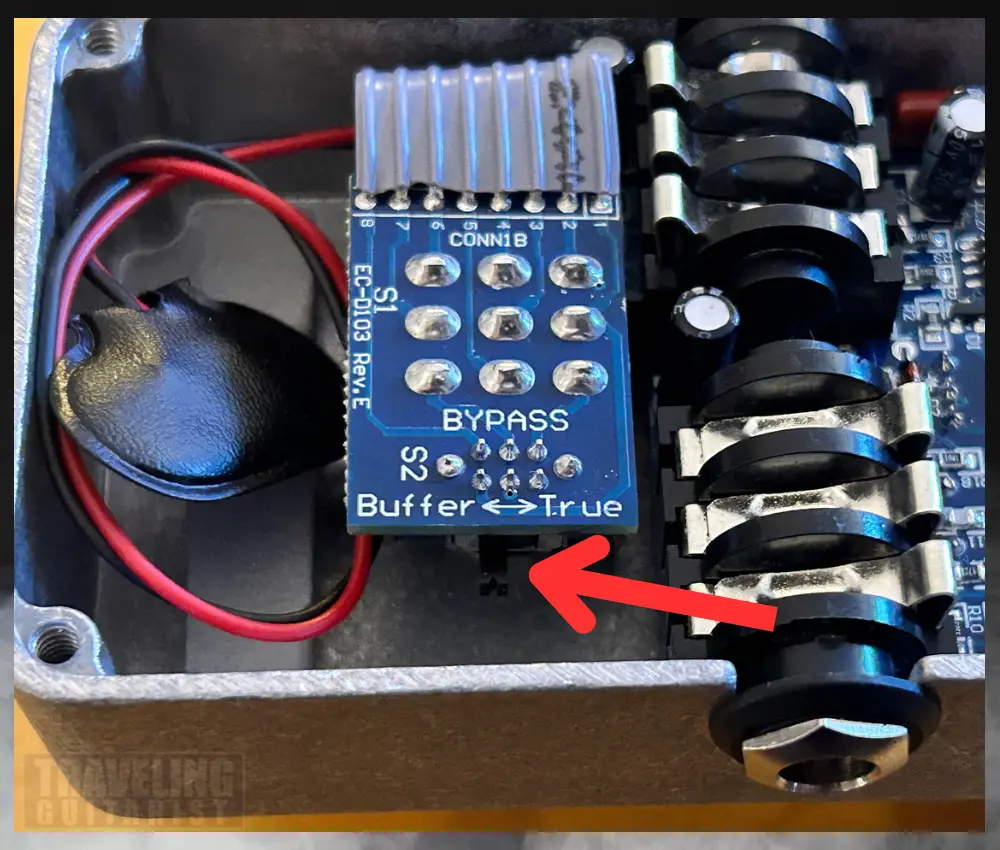
The factory default for this is True bypass, the position to the right. Flick the switch to its left position to turn it to Buffered Bypass.
E) Close the Pedal
Replace the back cover and tighten the screws.
F) Reconnect the Pedal
Plug the pedal back into your setup and reconnect the power supply.
Why Does True / Buffered Bypass Matter for the Soul Food?
The debate of True vs Buffered bypass is a long-standing one. Here’s a quick recap in case you’re confused:
- True Bypass is when your pedal’s circuitry is entirely bypassed when you disengage it. So the signal goes straight from the input to the output jack. The benefit is that your guitar’s signal remains pure and unaltered.
- Buffered Bypass is when the signal is sent through a buffer circuit, even when the pedal is off. This can affect the tone slightly. But it can prevent high-frequency loss and maintain strong signals across long cable lengths.
Personally, I stick to True Bypass because it works well, and I don’t notice any difference in sound when the pedal is off.
Note: with Buffered bypass, the pedal must be powered all the time (either by a 9V power supply or battery), otherwise the buffer will not work, and you won’t get any sound.
There’s no right or wrong choice, just check your pedalboard setup to see what works best for you.
How to Power The EHX Soul Food
Like most overdrive pedals, powering the Soul Food is easy as you have 2 options for it:
1) 9V Alkaline Battery
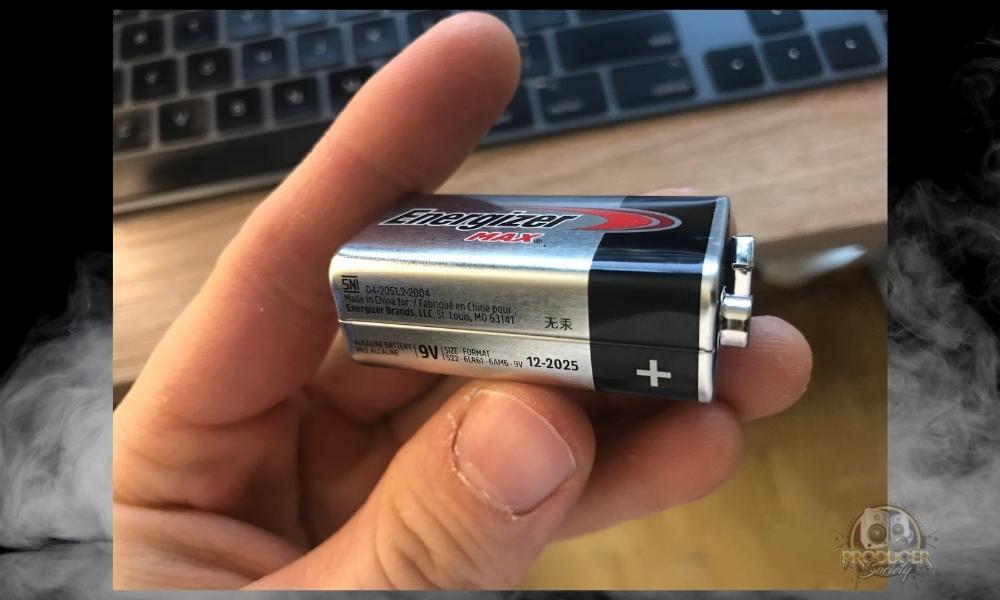
You can power the pedal with a single 9V alkaline battery. Similar to the steps above, open up the back cover of the pedal with a screwdriver.
Then, you can find the battery holder; gently pull out the previous battery if there is one, and insert the new battery with the correct positive and negative terminals.
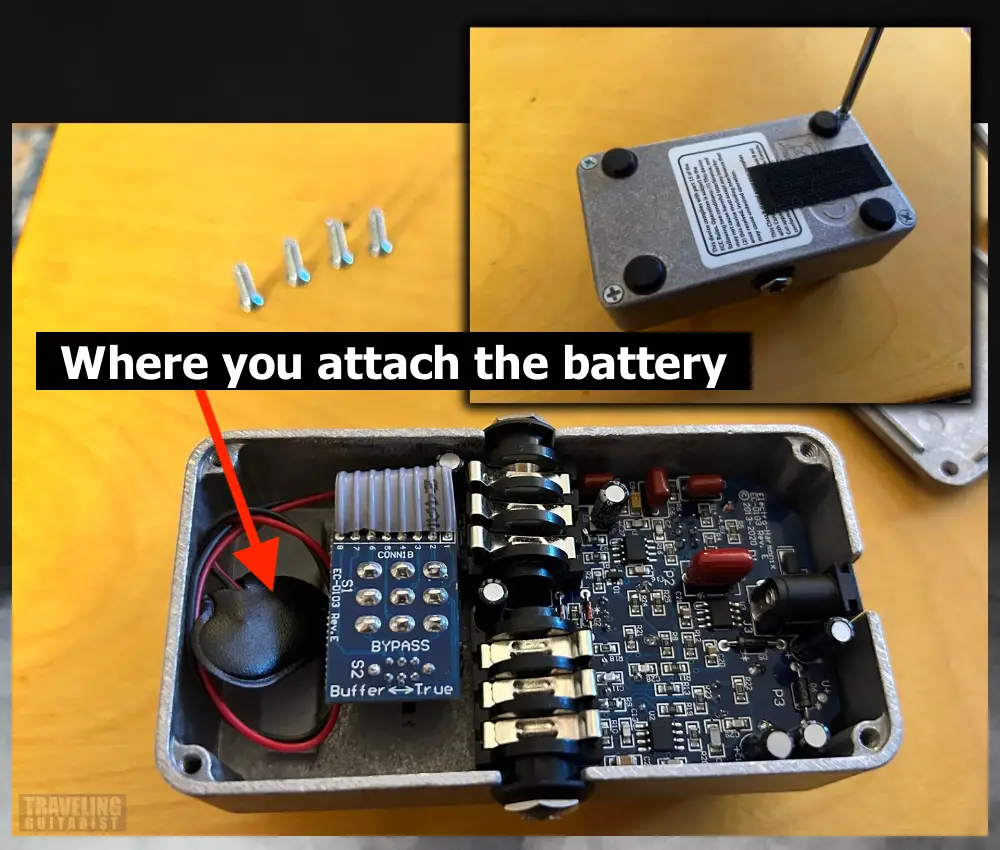
Note: Using carbon batteries as opposed to alkaline may alter the sound slightly, making it less bright, a bit softer, and reducing the headroom.
This is because the voltage and current supplied by carbon batteries are not always consistent. I usually recommend using a power supply for consistent performance.
2) 9VDC Power Supply (22 mA)
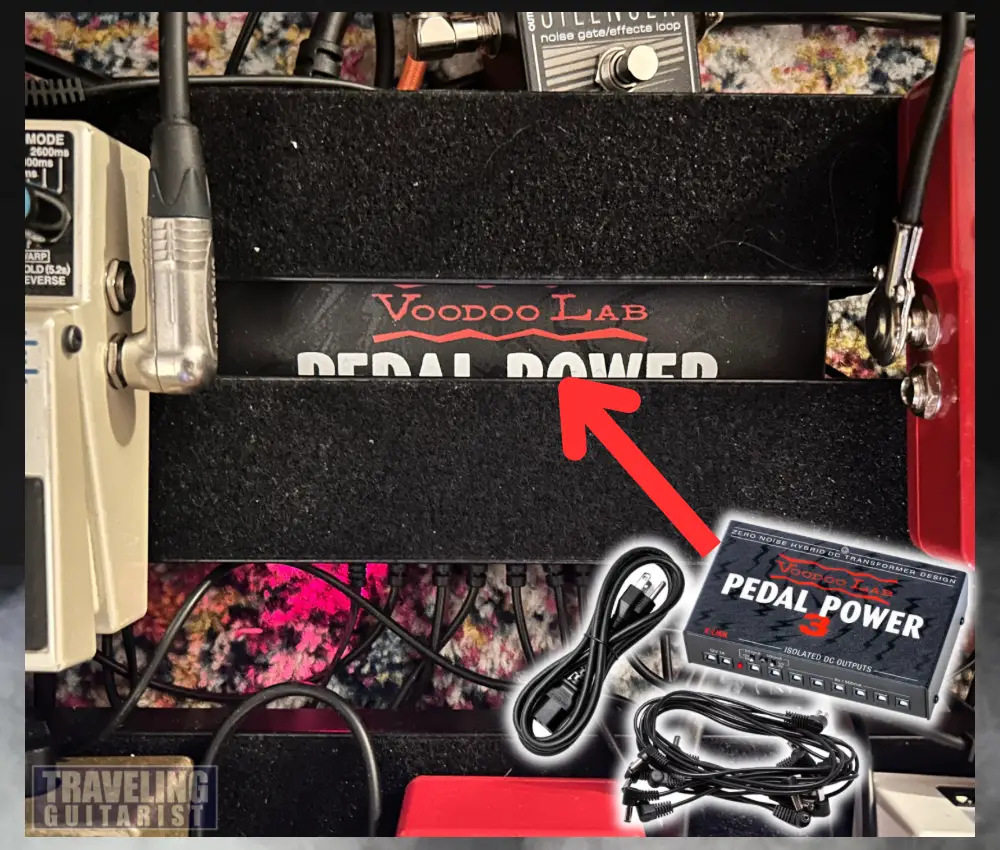
If you don’t have something like the Pedal Power 3 Plus, EHX supplies a 9V power supply with the Soul Food, so you can use it instead.
Just connect the adapter to the pedal’s power jack, located at the top of the unit.
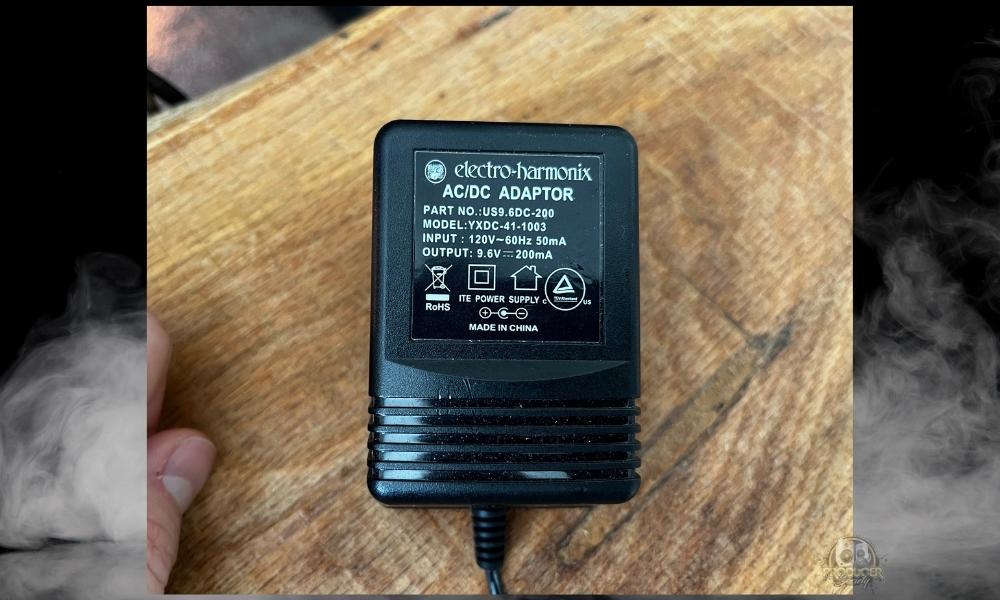
This overdrive only draws about 22 mA of current, which is pretty low. So just about any 9V power supply should do the trick.
But make sure it’s not any other voltage; 12V or 18V could destroy the internal components.
Where To Put The EHX Soul Food In Your Signal Chain (And Why)
1) After Filters, Pitch, Tuner, and Dynamics Pedals
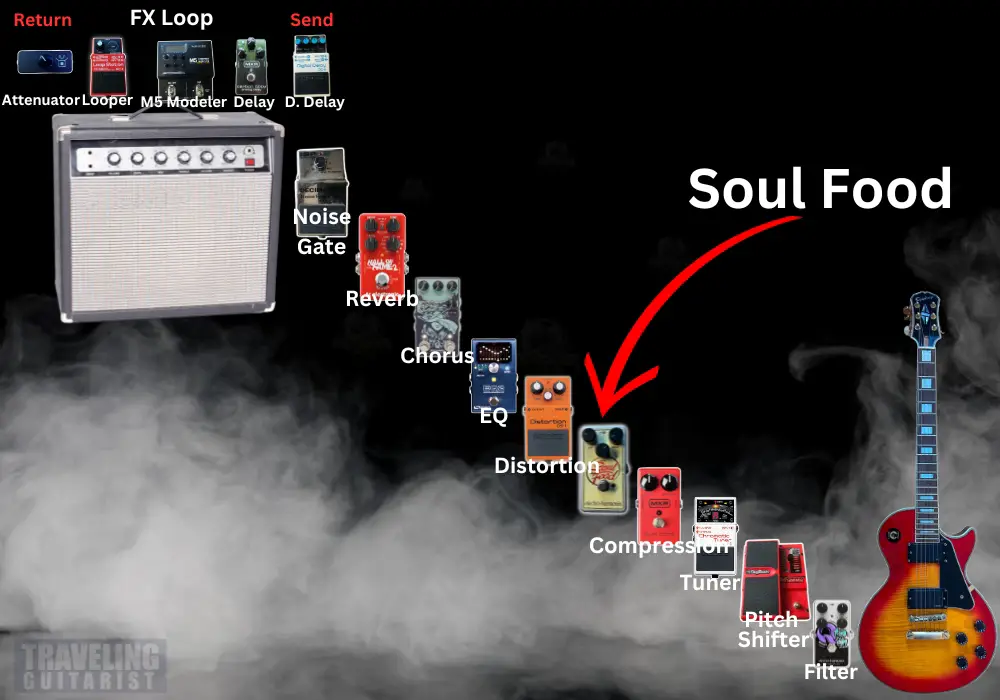
The standard way of setting up drive pedals is to place them early in the signal chain but after dynamics, pitch, and filter effects.
Getting the pedal as close to the source as possible is always the goal. However, some must come before others to achieve a particular sound.
Placing compression, pitch-shifting, or filter effects first ensures that they process a clean, unaltered guitar signal, so they work best.
Adding the Soul Food next gives life to this processed signal, adding richness and warmth. It creates consistency and follows a logical gain structure.
With a good chain, it’ll tighten your low-end and enhance harmonics for the best impact.
If you put the overdrive before the other pedals, you’re likely to get a dirtier, almost chaotic tone, but you’re welcome to try it once if you’re adventurous.
2) Paired With Distortion Pedals
I often pair overdrive and distortion, it gives me more flexibility over how my guitar sounds, and works well during jam sessions and gigs.
Since the Soul Food is an overdrive pedal, I place it before my distortion pedal, like the BOSS DS-1. This also follows a consistent gain structure: from lower gain to higher gain.
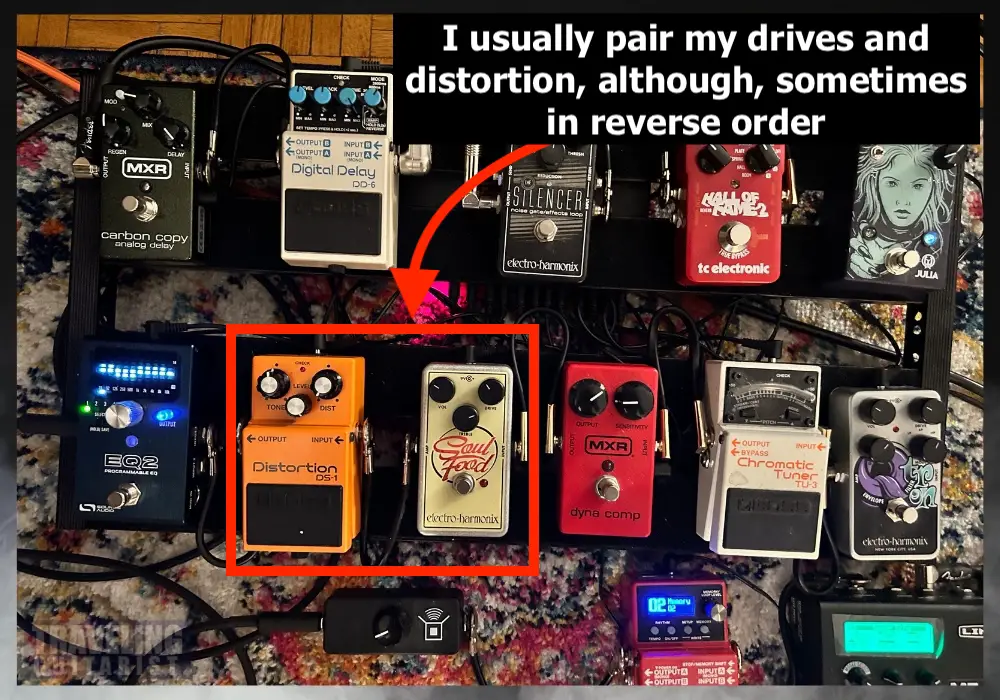
In this setup, I usually set the Soul Food as a clean boost, so it can enhance the clarity, note definition, and overall character of the guitar tone. The distortion adds the high-gain cherry on top. So I get four possible tones here:
- Both pedals OFF: This is my clean tone.
- Only Soul Food: This is a nice boosted tone, on the edge-of-breakup.
- Only Distortion: For a beefy, high-gain, rhythm tone.
- Both pedals ON: For an aggressive, distorted tone that’s great for lead guitar.
If you prefer the gain characteristic of the EHX, then you can place it after a distortion pedal to make it more prominent. But in this case, you should keep the distortion pedal to a lower gain and volume, or else it might make the signal noisy and incoherent.
3) Before and After An EQ Pedal
An EQ pedal can be a guitarist’s best friend, especially when you use it to modify your overdrive pedal.
If you place the Soul Food before an EQ pedal (like an MXR ten-band), you can shape the structure of the boosted signal.
So you could lower the treble, add mids, or even make it more V-shaped by lowering mids and boosting the bass. This setup has a more pronounced effect on the final sound.
You can also place the overdrive AFTER the EQ pedal, which lets you tailor the clean signal to your requirements. For example, you can use the EQ to emulate the sound of another pickup, and then use the overdrive to emphasize this.
All these options provide flexibility and control, helping you sculpt your guitar’s voice. So experiment a bit, and you can find your signature sound.
5 Cool Ways to Use the EHX Soul Food Pedal
1) Compression & Drive for ‘Dirty’ Articulation – “Texas Floods”
Pairing this overdrive with a compression pedal, with the drive coming after the compression, is my favourite setup. What you get is an articulate and dirty tone.
This combination makes shredding a breeze and adds a fun twist to your playing. Set your compression pedal to add sustain and even out the dynamics.
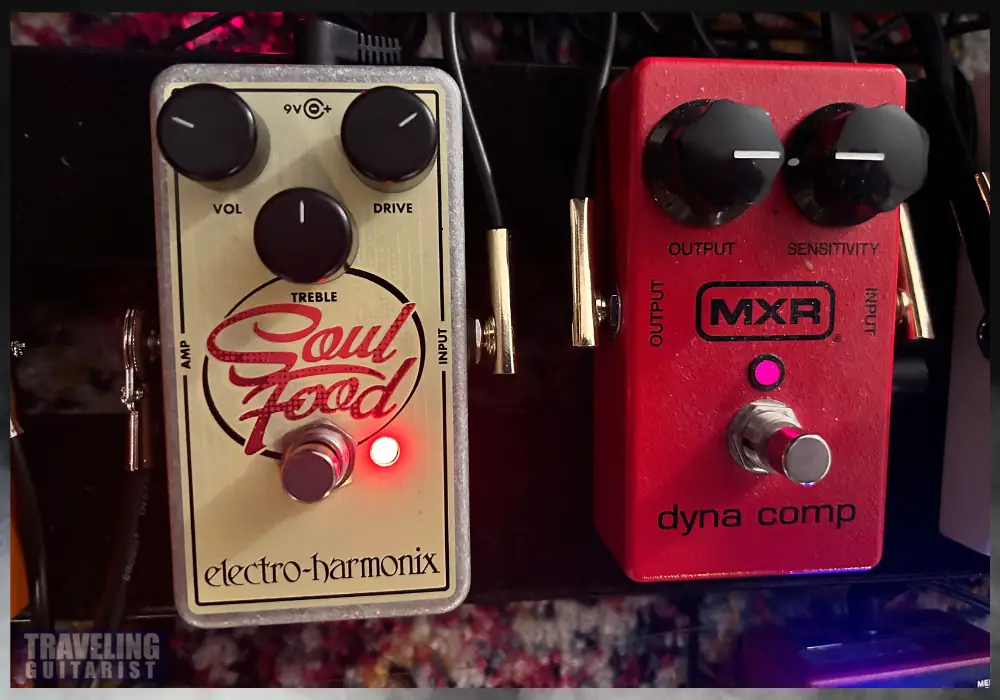
To get SRV’s “Texas Floods” tone:
Drive: 1:00 pm
Treble: 12:00 pm.
Volume: 10:00 pm.
Ensure you use a Stratocaster with the neck pick-up turned all the way up.
You also want to set your Dyna Comp to the “Nashville” Compression setting which you can see in the image above.

2) Using the Soul Food as a Clean Boost
The Soul Food can be handy for a clean boost, enhancing your guitar’s natural tone without adding unwanted coloration.
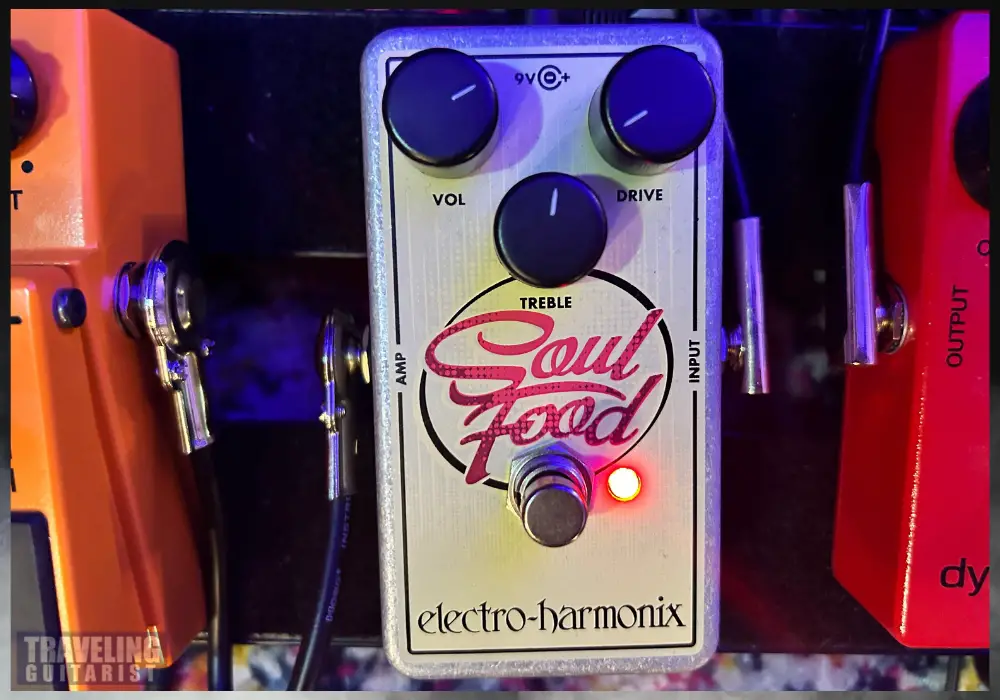
Drive: 8:00 pm
Treble: 12:00 pm
Volume: 1:30 pm
My personal preference with this setting is to turn my pickup volume down to 50% or so. I’m using active pickups, and it sounds awesome when I use the pedal with it.
Now sometimes you might find that you need to adjust the Volume to get to unity gain. This preset is great for pushing your amp or a distortion pedal into sweet saturation.
3) Achieving A Light “The Thrill is Gone” Tone
For blues players, this pedal can help create a rich and expressive tone that captures that essential warmth. Here’s how:
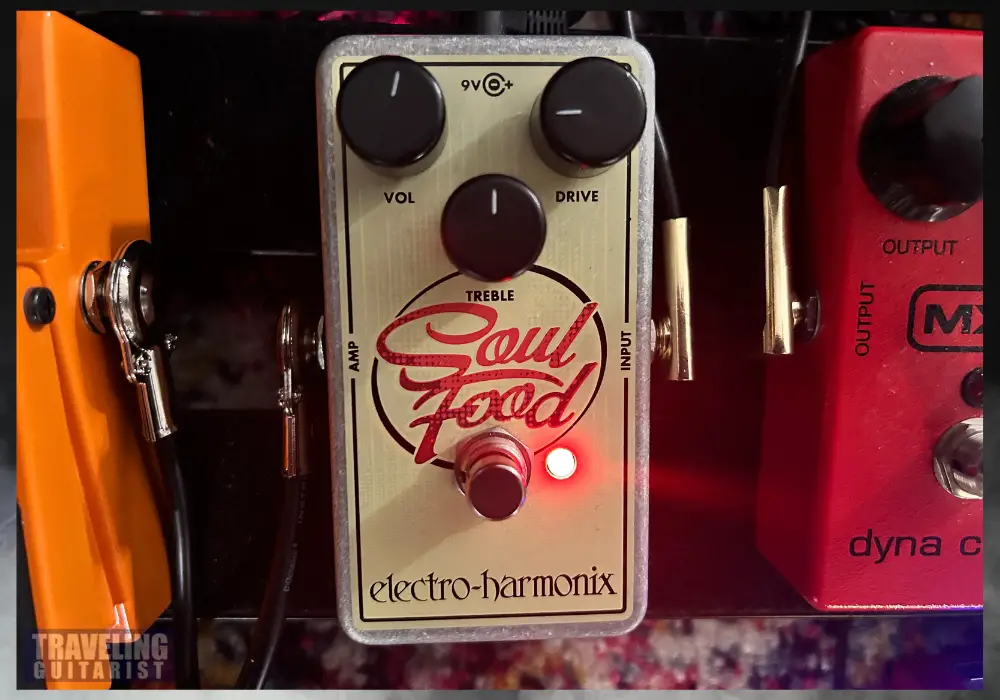
Drive: 9:00 pm
Treble: 12:00 pm
Volume: 12:30 pm
You could roll back the Drive if you find it too aggressive. Also, adding a reverb pedal can create depth and space, so you could get pretty close to B.B. King’s tone in ‘The Thrill is Gone’.
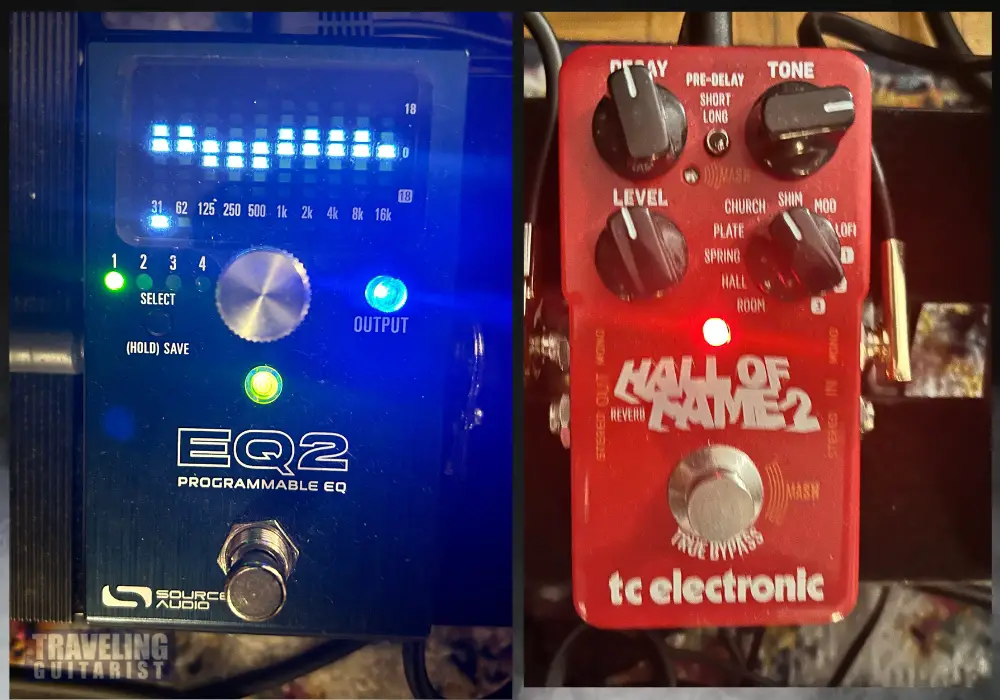
The thing about this tone though is that it’s quite thin and brittle sounding to make room for all of the other instruments in the mix.
4) Creating a Thick Lead Tone – “Sweet Child O’ Mine”
While it’s a transparent overdrive at lower Drive settings, you can get a lot of gain from the Soul Food. To get a thick lead tone that cuts through the mix, try this:
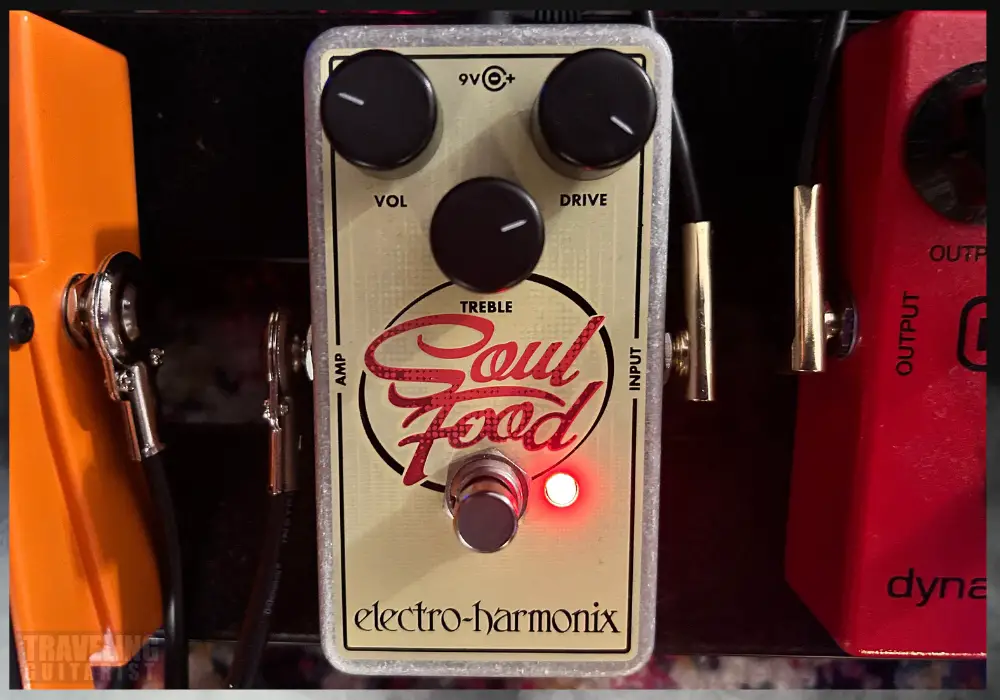
Drive: 4:00
Treble: 2:00
Volume: 10:30
I prefer balancing my volume to be only slightly louder than my rhythm tone, but if you want you could go for a bigger boost.
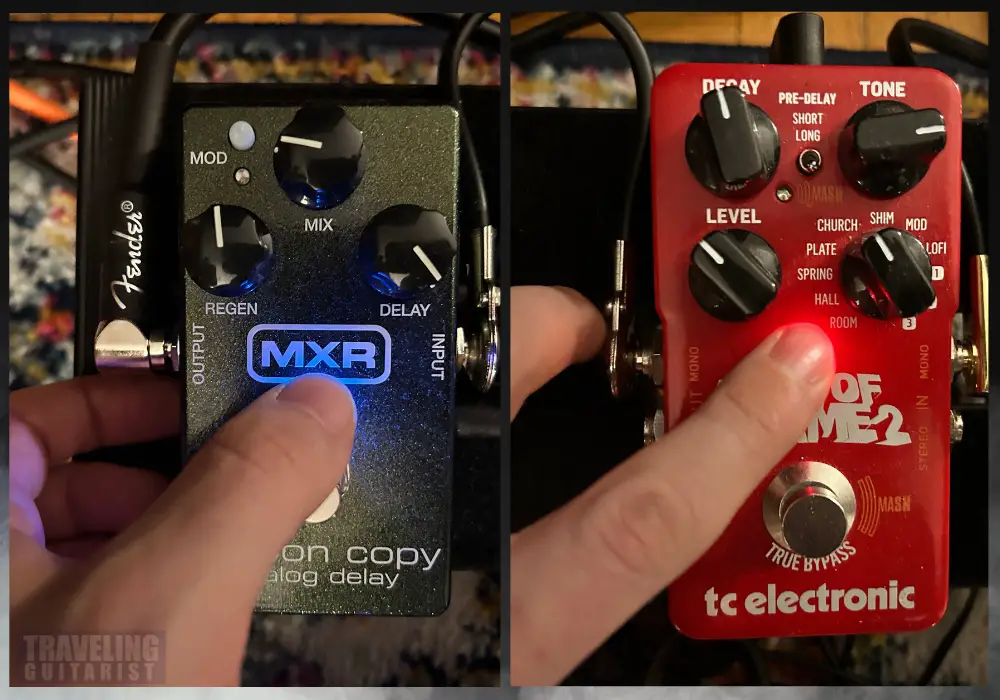
Pair a delay pedal with this with a Low Mix setting to make it even richer and fatter. You can get close to Slash’s tone on GnR’s ‘Sweet Child O’ Mine’, particularly if you use a Les Paul.
5) Mimicking Classic Rock Tones – “Whole Lotta Love”
At its heart, the Soul Food is a Klon Centaur clone, which makes it perfect for getting classic rock tones like Jimmy Page in Led Zeppelin’s ‘Whole Lotta Love’. Here’s my configuration:
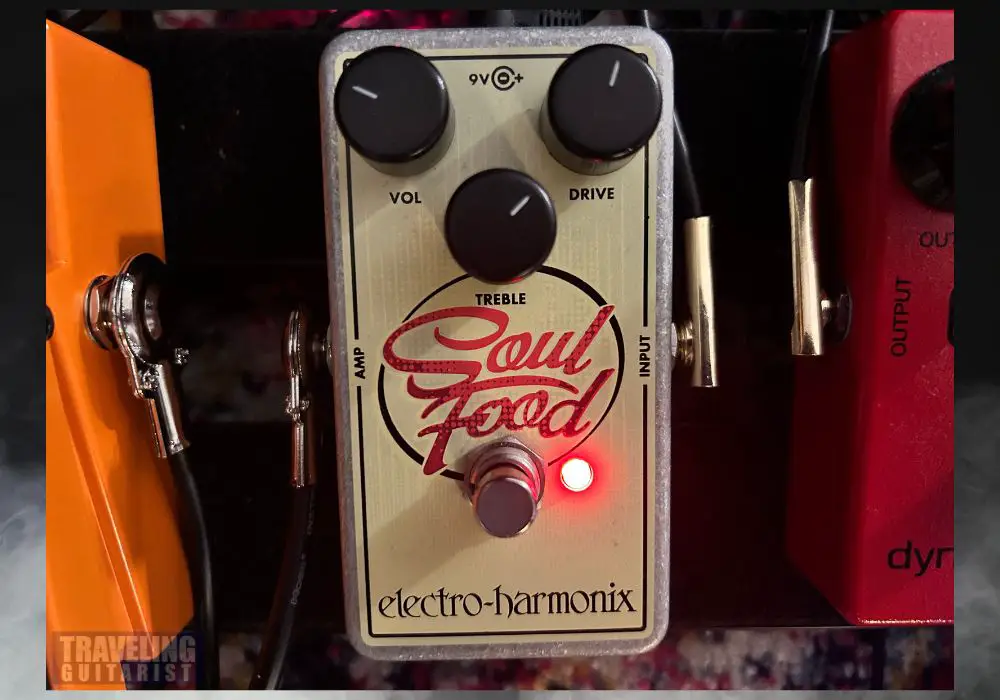
Drive: 12:30 pm
Treble: 1:00 pm
Volume: 10:00 pm
You can try pairing this with a chorus or a phaser to get some really groovy tones.
3 Solid Features of the EHX Soul Food
1) It’s Extremely Well-Built
The pedal has great construction and a simple layout:
- Robust Design: With a rugged metal chassis, the pedal is built to withstand rigorous use, whether on stage or in the studio. It feels solid and heavy in the hand.
- Compact Size: It’s still compact enough to fit comfortably on any pedalboard.
- Ease of Use: The knobs are easy to use, and they rot ate smoothly, so it’s easy to dial in the perfect setting.
This pedal is meant to last, and I found no compromise in its build.
2) Sounds Great
The Soul Food’s sound is amazing and versatile:
- Versatility: From clean boosts to full-on overdrive, the pedal offers a wide range of sounds that can suit various musical styles.
- Transparency: It truly is transparent, allowing your guitar’s natural tone to shine through while adding just the right touch of dirt.
- Responsive: With boosted power rails, it’s super responsive to playing dynamics, offering a lot of definition and headroom.
It’s become a favorite of mine on my pedalboard, and I’ll probably use it for a long while.
3) It Has Both True / Buffered Bypass Switching
The internal switch’s bypass options provide flexibility and control over your signal path. So whether you’re a true bypass purist, or you prefer buffered bypass, you can pick whichever one with just the flick of a switch. No mods required, unlike some pedals (like the TS-9).
I’m curious to know what your thoughts are on this pedal? Do you have any cool settings or interesting ways to use it? Maybe you don’t even like it. Let me know down in the comments.


 Written By :
Written By :
